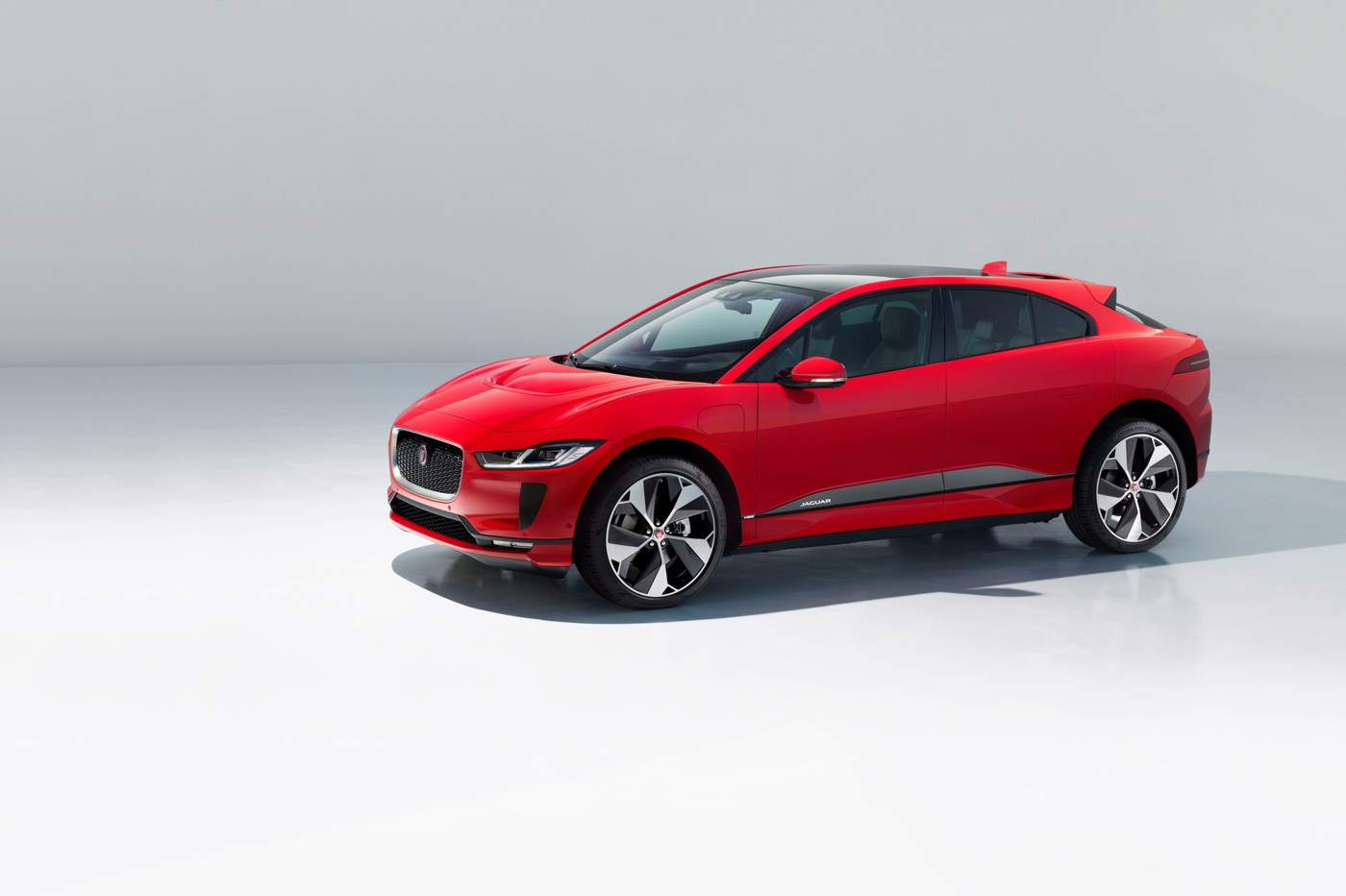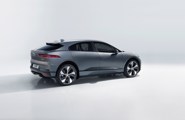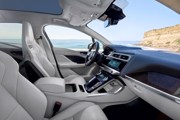Review
Joining Jaguar’s ever-expanding SUV range this year is the all-electric I-Pace. It’s the first electric car to be sold by Jaguar Land Rover and promises a dynamic and luxurious driving experience with the benefit of zero-emissions.
Order books are now open and prices start at £63,495.
Jaguar believes the five-seat I-Pace will be a popular choice for companies seeking to reduce their carbon footprint and fleet costs.
The model range will consist of S, SE and HSE derivatives alongside a First Edition, all inspired by the design of the original concept.
Having been designed from the ground up to be an electric vehicle, the I-Pace benefits from a number of technical innovations to boost range and driveability.
“We set out with a clean sheet approach to harness new battery electric technology with an architecture engineered from the outset to optimise performance, aerodynamics and interior space,” said Ian Hoban, vehicle line director, Jaguar I-Pace. “The result is the I-Pace – a true Jaguar and truly driver-focused EV.”
It has a range of almost 300 miles and supercar-like performance, yet can be recharged in as little as 45 minutes.
Exterior
Styling remains almost unchanged from the I-Pace Concept which debuted more than a year ago.
Its muscular stance is complemented by 22-inch alloy wheels and Jaguar’s new matrix LED lights which feature the brand’s signature Double-J indicators.
Production models have a similar footprint to a Jaguar XE saloon yet enjoy a far more striking appearance thanks to its electric drivetrain, which enables the bonnet to be lower and shorter than a regular SUV.
Its coupé-like silhouette benefits aerodynamics, which is key to boosting range – even the bonnet scoop helps reduce drag by channeling air over the roof.
The flush door handles emerge when touched and retract back into the doors while driving to make the car as slippery as possible.
Models equipped with optional air suspension can increase aerodynamics further by automatically lowering the car by 10mm at speeds above 65mph.
Driveability
Jaguar developed the I-Pace to be a high-performance electric vehicle from the outset with a focus on providing engaging driving dynamics alongside everyday usability and comfort.
“The I-Pace is a true Jaguar, delivering driver-focused dynamics with exceptional ride, handling and refinement,” said Mike Cross, Jaguar chief engineer. “With all-wheel drive technology and 400PS, our first electric vehicle delivers instantaneous acceleration on all road surfaces and in all conditions.”
By placing the battery as low as possible and between the axles, the car has
a low centre of gravity, which helps to reduce body roll, and a 50:50 weight distribution to optimise grip.
To minimise weight, the body is made from aluminium, boosting both performance and efficiency.
Adjustable levels of regenerative braking allow the driver to experience
‘single-pedal driving’ as the car can decelerate quickly when lifting off the accelerator, reducing reliance on the brakes to slow down.
Interior
Low slung seats give the I-Pace a sporty feel and plenty of head room, despite the sloping roofline.
Passengers can enjoy a spacious cabin which offers 890mm of legroom in the rear and a 10.5-litre storage box between the front seats.
A floating dashboard houses two high-definition touchscreen displays – debuting Jaguar’s Touch Pro Duo infotainment system.
There are no conventional switches; everything is controlled through one of the screens or the touch-sensitive buttons.
Further storage is available under the rear seats, while the boot has a capacity of 656 litres – larger than most medium-sized SUVs – increasing to 1,453 litres with the seats folded flat.
An optional panoramic roof provides a greater sense of space and features glass that can absorb infrared light, removing the need for blinds.
The slimline sports-style seats can be upholstered in leather or a sustainable premium textile alternative.
Technology
Jaguar has developed a new EV Navigation system for the I-Pace to support drivers with the challenges of driving an electric car. It can factor in hills and considers driving style to provide a more accurate range.
It can suggest the nearest available parking space in networked car parks or direct the driver to the closest charging point at the end of a journey.
Key information is projected onto the windscreen and the I-Pace also features a fully digital instrument panel.
Over time the car learns from its driver, allowing it to customise climate and infotainment settings. It can also activate the heated seats and steering wheel in anticipation of a particular journey.
Jaguar’s InControl Remote smartphone app gives access to remote services such as range display and activation of the heating or cooling system.
Software updates can be applied wirelessly and there is 4G, Wi-Fi and USB charging points for all occupants.
Powertrain
The zero-emission I-Pace can cover 298 miles between charges thanks to a 90kWh battery pack integrated into the car’s chassis.
It provides power to two electric motors, built into the front and rear axles – giving all-wheel drive and instant acceleration.
Total system output is 400PS, with almost 700Nm of torque – enough for a 0-60mph in just 4.5 seconds and a 124mph top speed.
Jaguar claims the car’s battery can be charged to 80% in just 45 minutes using a DC Rapid Charger, although these are only just being introduced in the UK.
Expect an 85-minute charge time using a current rapid charger or around 10 hours from a domestic wall box.



































